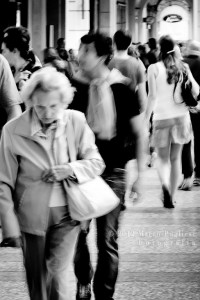We recently talked about how to make our house secure with mechanical systems and electronic systems; we focused on the features which a high security cylinder should possess and on other measures useful for improving the protection provided by locking systems.
Today we’ll talk about the concept of security and also statistics. What is the difference between actual security and perceived security?
The term “security” as mentioned in the Sudgestaid article, has over time undergone several semantic shifts, until it now being accepted (especially in Italian) that it refers to the security of individuals with regard to the possibility of them being threatened by crime.
Thanks to the improvement of investigation methods, crime rate statistics provide a fairly accurate picture of the crimes committed, following reports by the public or statements by police officers.
However, it is also necessary to take into account the trend over recent years of, for several reasons, not reporting crimes suffered. This will lead to a sort of data consistency with regard to the most serious and, therefore, most reported crimes (such as murders or robberies), whilst the data will be more fragmented in terms of time and place in relation to the so-called “minor” crimes, such as thefts and muggings, which are reported less frequently.
Real security is mainly linked to the risk of being a victim of crime, which nowadays is recorded by numerous statistics from authoritative sources. The data analysed in the article identifies a reduction of crimes such as murder and robbery and a relative improvement in the real security by taking into consideration the long term.
As already mentioned, however, the crimes considered (erroneously) to be “minor” crimes are not always are reported and, as we have already seen in a previous blog, the risk of property crime is high and very variable throughout the country.
However, when we refer to perceived security (i.e. the personal sensation of potentially being the victim of a crime), there are many factors which can affect the results. Differences in gender, age and level of education affect the perception of security (or rather insecurity), in addition to where one actually is at the time.
In fact, in general, one feels safer in areas with a lower population density, where relations with neighbours are closer and there is greater control, than when living in metropolitan areas, where the pace of life is usually more hectic.
Conclusions
Statistics are important, as they allow us to be aware of the reality around us. However, we must remember that the results of research only offer a representation of reality, which cannot be considered 100% true, given the many factors which can influence the perception of reality.
However we recommend, as always, that you keep informed, by means of our blog, on the behaviours, techniques and products which help reduce risks, preventing as much as possible any crimes which can affect us or damage to our property. On the other hand, as T. Hobbes and F. Bacon stated: “Knowledge is power”; in this case, the power to protect oneself.


